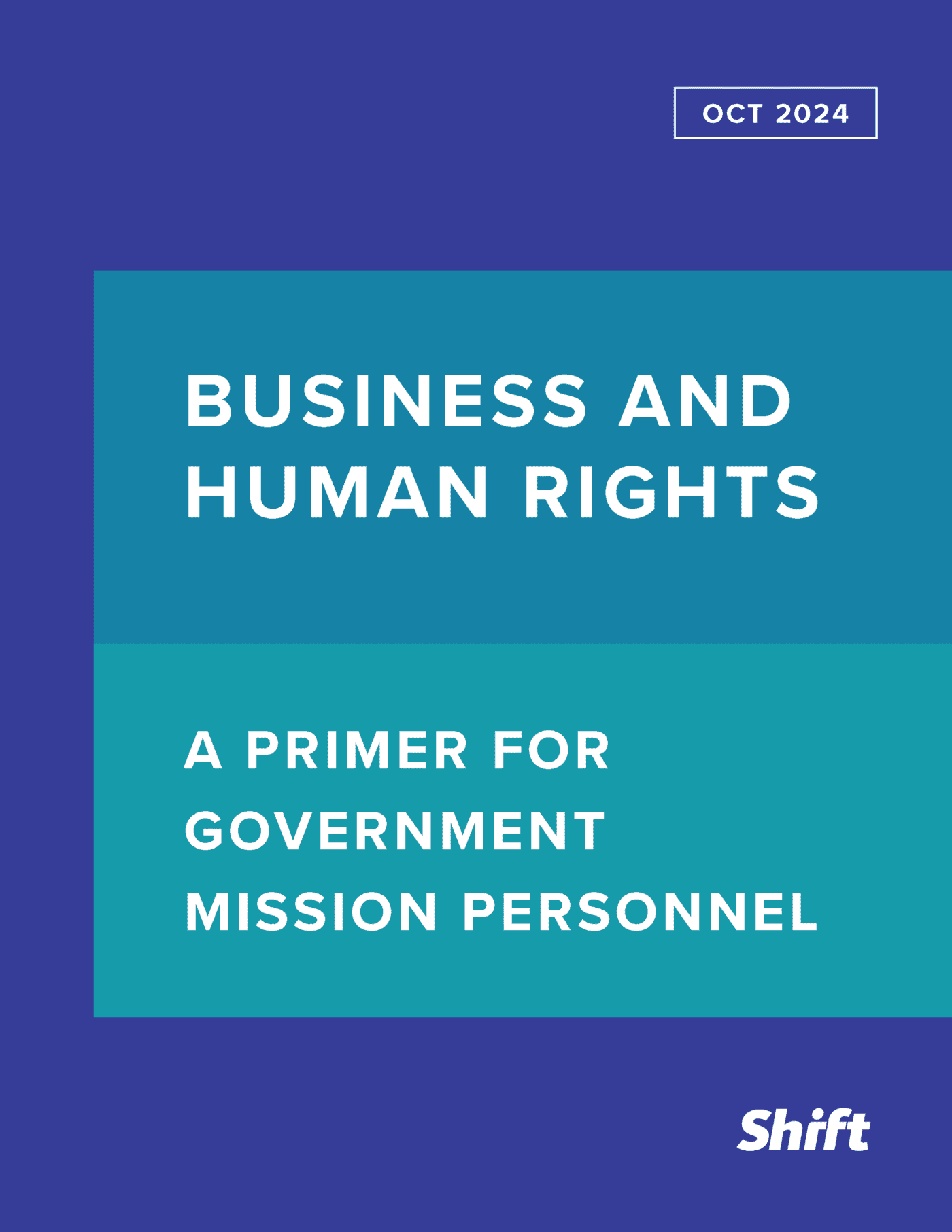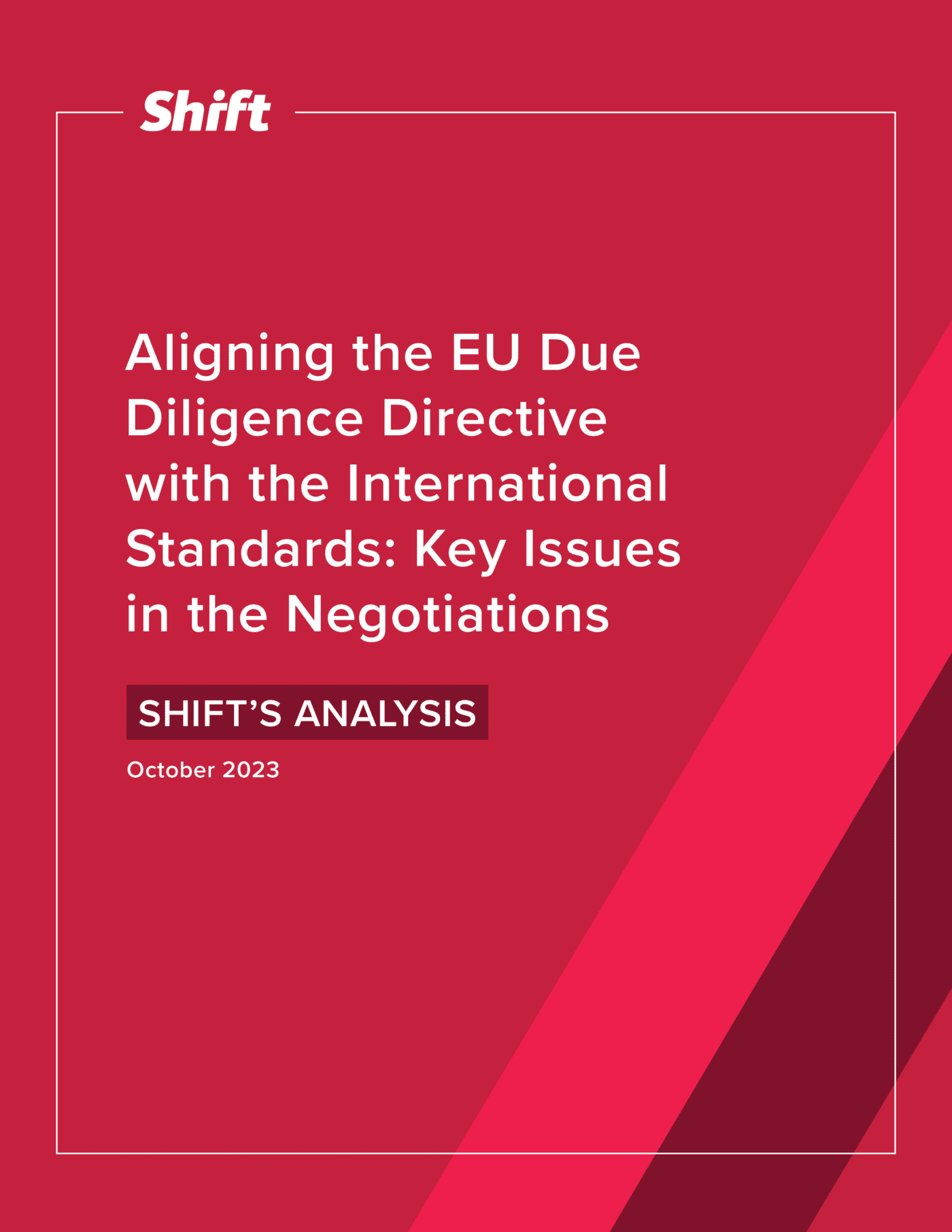In spite of an upsurge in leading practice on business and human rights, compliance audits remain a common approach in supply chain human rights due diligence. However, more and more companies are recognizing the limitations of a pure compliance approach in engaging workers, uncovering meaningful issues and enabling sustained improvements. Instead, leading companies are moving towards using Worker-Centric Assessments (WCAs) as one in a range of more effective tools in their due diligence process.
What are Worker-Centric Assessments?
WCAs go beyond the completion of a compliance checklist, in order to devote more time to interviewing workers. They focus on their journeys and experiences as human beings, rather than as “labor” in a production process. Through stories and qualitative data, they bring workers “closer” to company decision-makers.
How do Worker-Centric Assessments help achieve outcomes for workers?
WCAs can better position companies to bring about positive outcomes for workers because they make it harder for the business to ignore negative impacts on people and easier for them to identify how to prioritize action and what types of practices, behaviors and indeed remedies are most important to those who may be affected.
Businesses that use WCAs can focus on a person’s individual journey, in order to understand the nunaces and differences that exist across the unique experiences of each worker.
Businesses that use WCAs can focus on a person’s individual journey, in order to understand the nuances and differences that exist across the unique experience of each worker. For example, the salary of two workers may be the same – let’s say, 600 USD per month. However, if one received accurate information during the recruitment process and accepted the salary, while the other was offered 1,000 USD and received forty percent less, their experience and sentiments may be vastly different.
WCAs can also help companies see the cumulative effects of different impacts on workers and how these build over time. These insights can help create greater empathy among decision-makers, and make it harder to rationalize impacts on people as a compliance statistic.
The window into worker experience makes it easier for companies to understand where to prioritize their efforts.
By offering a window into worker experience, WCAs make it easier for companies to understand where to prioritize their efforts. From my experience engaging with migrant workers in construction, workers often complain about the poor quality of accommodation and food, but rarely about their daily 12+ hour shifts. When you scratch beneath the surface, however, workers do not prioritize the issue of excessive working hours because they have nowhere to rest comfortably, so they may prefer to keep working and earn overtime pay. Experience shows that once the quality of accommodation improved, the issue of long working hours and days off becomes a higher priority.
WCAs can also help companies approach remedy holistically. Take a factory context, for example, where a company may have identified that workers are concerned about feeling mistreated. A decision-maker may be compelled to identify managers who yell at their direct reports and discipline them. But, that may serve little to no purpose if workers who complained were actually worried about other forms of ill-treatment. In a specific experience that I recall in a food manufacturing plant, the worry that was top of mind for many workers was that they were allocated lower quality personal protective equipment, or that they were required to wear a hairnet of a different color while on the production floor. A glance at the workers’ experience brings up contextual issues which discipline alone will not address.
Gaining buy-in for Worker-Centric Assessments
Human rights practitioners sometimes face internal resistance to incorporating WCAs into supply chain management processes. This resistance is often rooted in fears and misconceptions.
Fear of the unknown
Too often, managers fear that workers will make “impossible” demands in response to qualitative assessment questions. Managers frequently claim that workers don’t know what they want or that if something is not against the law then it is a matter of opinion. However, experience shows that workers’ feedback and requests are firmly rooted in their everyday realities. For example, not having to wear safety shoes drenched with sweat from the previous shift, or having better quality food at their accommodation. Neither seems impossible.
High burden of proof
Some impacts – particularly those related to treatment – don’t leave an auditable trail of documentary evidence. But documents are not the only credible source of information. Experience shows that the signs of abuse are often “written” on workers themselves: in what they say, their body language, their health or the stories they share. WCAs are an entry point to discover human rights impacts not included in the audit checklist, and a way to see the working conditions from the perspective of those who experience it every day.
For example, a bizarre question often asked in compliance audits is whether migrant workers have receipts for recruitment fees. Instead of focusing on the existence of receipts as documentary evidence, a worker-centric approach may consider recruitment fees to be endemic to migration for low-skill jobs, particularly in certain corridors. The WCA would turn the question on its head and ask: what evidence can the employer provide that the migrant workers didn’t pay recruitment fees?
Confusing “level of detail” with “level of credibility”
Capturing the breadth and depth of workers’ lived experiences is not without its challenges. It is important for WCAs to be conducted by assessors who have a similar background to the workers, speak the same language and have a high degree of empathy.
I have sometimes seen requests that findings be “downgraded to observation” because the report was not written in perfect English or does not answer every follow-up question a reader may have. When this happens, it is important to focus the attention on the information available, rather than what may be missing. WCAs are the beginning of what should be a longer-term engagement with workers and suppliers – one tool in due diligence activities. It is important to constantly bring the focus back to risk to people, which is core to the UN Guiding Principles. Does the request to “downgrade” a finding stem from the fact that it carries lower risk to people? Or is it because it entails lower risk to the business?
Towards more robust human rights due diligence
As investors, regulators and business partners move to scrutinize the quality of processes within companies’ human rights due diligence – rather than just the existence of certain compliance steps – WCAs can be an important tool to consider. They offer an avenue to strengthen stakeholder engagement, a critical feature of human rights due diligence. As workers are brought closer to company decision-makers it is more difficult to overlook negative impacts, and easier to understand where and how actions can be taken to deliver better outcomes for people.
Liked what you read? Learn more about the author, here.

 By Federico Burlon
By Federico Burlon



